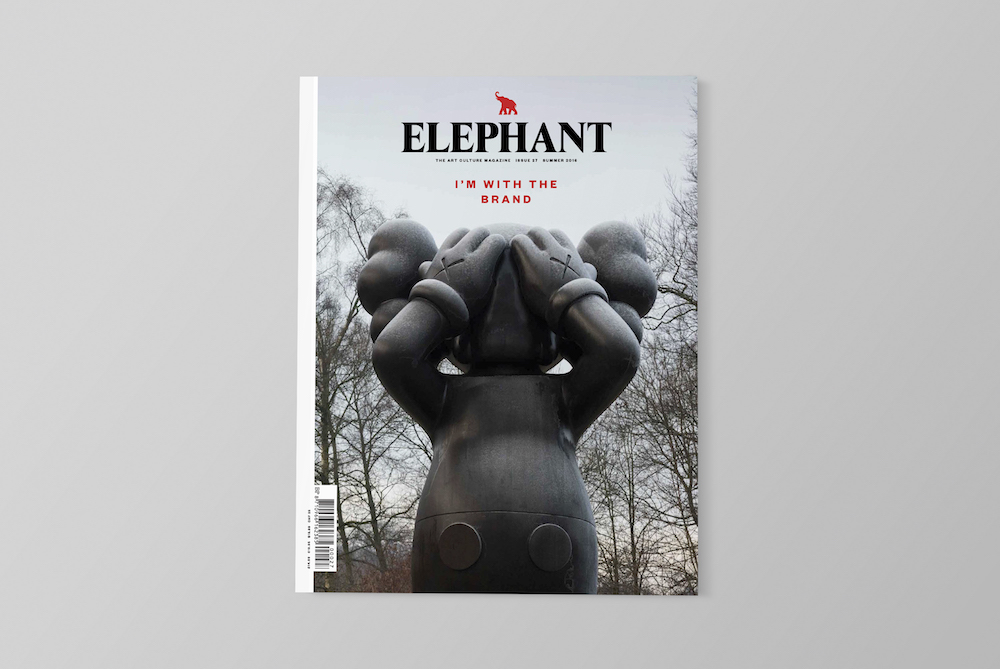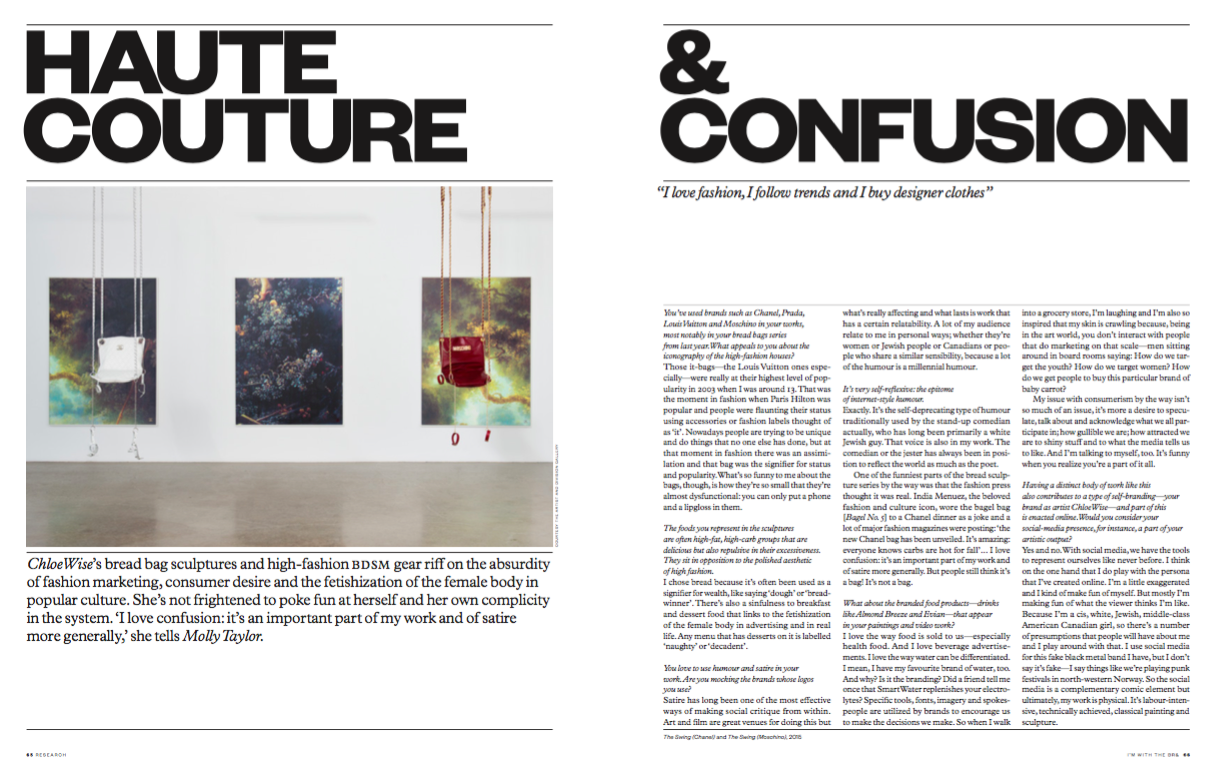
Chloe Wise’s bread bag sculptures and high-fashion BDSM gear riff on the absurdity of fashion marketing, consumer desire and the fetishization of the female body in popular culture. She’s not frightened to poke fun at herself and her own complicity in the system. ‘I love confusion: it’s an important part of my work and of satire more generally,’ she tells Molly Taylor.
This feature first appeared in Issue 27.
You’ve used brands such as Chanel, Prada, Louis Vuitton and Moschino in your works, most notably in your bread bags series from last year. What appeals to you about the iconography of the high-fashion houses?
Those it-bags—the Louis Vuitton ones especially—were really at their highest level of popularity in 2003 when I was around 13. That was the moment in fashion when Paris Hilton was popular and people were flaunting their status using accessories or fashion labels thought of as ‘it’. Nowadays people are trying to be unique and do things that no one else has done, but at that moment in fashion there was an assimilation and that bag was the signifier for status and popularity. What’s so funny to me about the bags, though, is how they’re so small that they’re almost dysfunctional: you can only put a phone and a lipgloss in them.
The foods you represent in the sculptures are often high-fat, high-carb groups that are delicious but also repulsive in their excessiveness. They sit in opposition to the polished aesthetic of high fashion.
I chose bread because it’s often been used as a signifier for wealth, like saying ‘dough’ or ‘bread-winner’. There’s also a sinfulness to breakfast and dessert food that links to the fetishization of the female body in advertising and in real life. Any menu that has desserts on it is labelled ‘naughty’ or ‘decadent’.
You love to use humour and satire in your work. Are you mocking the brands whose logos you use?
Satire has long been one of the most effective ways of making social critique from within. Art and film are great venues for doing this but what’s really affecting and what lasts is work that has a certain relatability. A lot of my audience relate to me in personal ways; whether they’re women or Jewish people or Canadians or people who share a similar sensibility, because a lot of the humour is a millennial humour.
It’s very self-reflexive: the epitome of internet-style humour.
Exactly. It’s the self-deprecating type of humour traditionally used by the stand-up comedian actually, who has long been primarily a white Jewish guy. That voice is also in my work. The comedian or the jester has always been in position to reflect the world as much as the poet.
One of the funniest parts of the bread sculpture series by the way was that the fashion press thought it was real. India Menuez, the beloved fashion and culture icon, wore the bagel bag [Bagel No. 5] to a Chanel dinner as a joke and a lot of major fashion magazines were posting: ‘the new Chanel bag has been unveiled. It’s amazing: everyone knows carbs are hot for fall’… I love confusion: it’s an important part of my work and of satire more generally. But people still think it’s a bag! It’s not a bag.
What about the branded food products—drinks like Almond Breeze and Evian—that appear in your paintings and video work?
I love the way food is sold to us—especially health food. And I love beverage advertisements. I love the way water can be differentiated. I mean, I have my favourite brand of water, too. And why? Is it the branding? Did a friend tell me once that SmartWater replenishes your electrolytes? Specific tools, fonts, imagery and spokespeople are utilized by brands to encourage us to make the decisions we make. So when I walk into a grocery store, I’m laughing and I’m also so inspired that my skin is crawling because, being in the art world, you don’t interact with people that do marketing on that scale—men sitting around in board rooms saying: How do we target the youth? How do we target women? How do we get people to buy this particular brand of baby carrot?
My issue with consumerism by the way isn’t so much of an issue, it’s more a desire to speculate, talk about and acknowledge what we all participate in; how gullible we are; how attracted we are to shiny stuff and to what the media tells us to like. And I’m talking to myself, too. It’s funny when you realize you’re a part of it all.
Having a distinct body of work like this also contributes to a type of self-branding—your brand as artist Chloe Wise—and part of this is enacted online. Would you consider your social-media presence, for instance, a part of your artistic output?
Yes and no. With social media, we have the tools to represent ourselves like never before. I think on the one hand that I do play with the persona that I’ve created online. I’m a little exaggerated and I kind of make fun of myself. But mostly I’m making fun of what the viewer thinks I’m like. Because I’m a cis, white, Jewish, middle-class American Canadian girl, so there’s a number of presumptions that people will have about me and I play around with that. I use social media for this fake black metal band I have, but I don’t say it’s fake—I say things like we’re playing punk festivals in north-western Norway. So the social media is a complementary comic element but ultimately, my work is physical. It’s labour-intensive, technically achieved, classical painting and sculpture.








